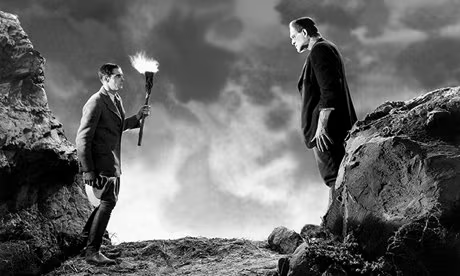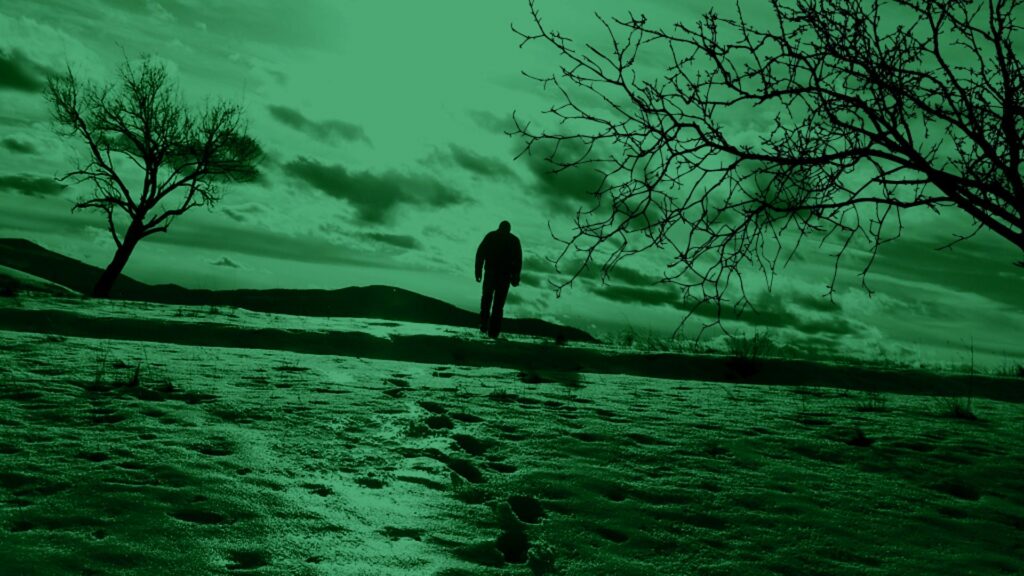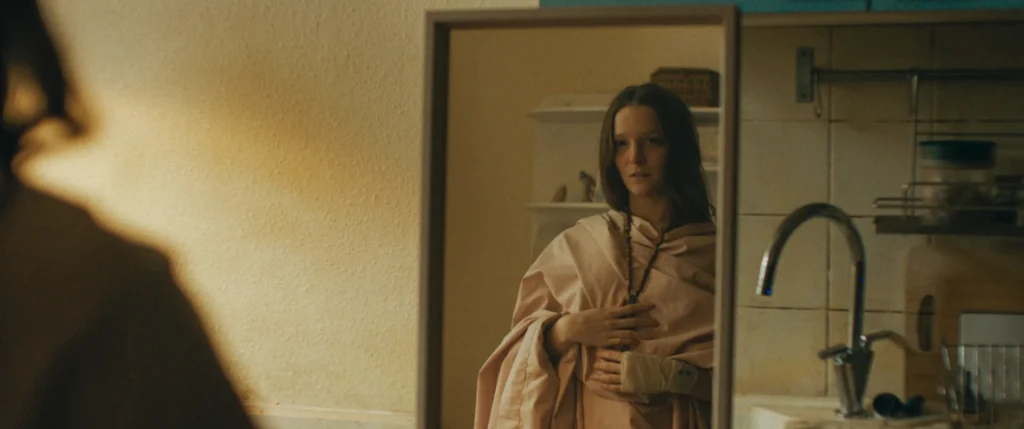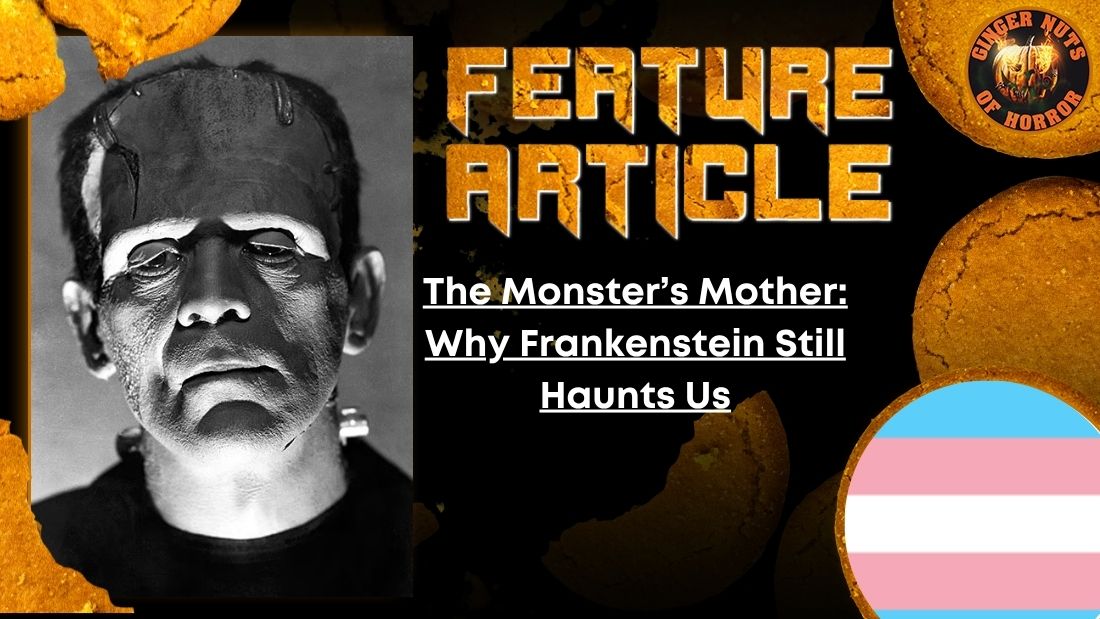Frankenstein’s Creature was never truly monstrous. He was unloved. That is what makes him terrifying—because we recognise him. In every rejected child, in every voiceless woman, in every silenced scream in the night, we see something of ourselves.
That is Shelley’s genius. That is her horror.
And that is why, two centuries later, her monster still walks among us.
The Monster’s Mother: Why Frankenstein Still Haunts Us
By Claire Fitzpatrick

Frankenstein (1818/1823) by Mary Wollstonecraft Shelley is my favourite novel and has been since the day I finished the final page. The story is more haunting than terrifying. Sure, it includes the man scientist, the monstrous stitched-together body of the Creature, and the flashes of lightning to set the gothic scene. But what really lingers is the sense of hopelessness and desperation. The raw ache of abandonment. In writing what is regarded as the greatest science fiction novel of all time, 18-year-old Mary Shelley didn’t just create a monster – she made a motherless world and then left us with the question: what happens to the children left behind?
Too often, Frankenstein is referred to as either science fiction or horror, a cautionary tale about scientific overreach and the terrible consequences of playing God. But underneath this parable is a quieter, more intimate familial horror, one rooted in Shelley’s experience as a young woman grappling with loss, grief, desperation, and the social constraint of her time. It is here that Frankenstein reveals itself not only as foundational Gothic fiction but as one of the earliest and most enduring examples of female Gothic horror. This horror still haunts women to this day.
What is Gothic Horror?
Gothic horror is a literary and cinematic genre that blends fear, emotion, and the uncanny. Originating in the 18th century with writers such as Horace Walpole and Ann Radcliffe, it fuses elements of Romanticism and horror, exploring the darker side of human psychology, death, decay, transgression, and the supernatural. It often takes place in eerie, decaying spaces —castles, graveyards, haunted mansions, and liminal, lawless places where the boundaries of reason collapse.
But Gothic horror is not just about aesthetic dread—it’s about moral and emotional crisis. What happens when society’s institutions fail us? What horrors are birthed by the repression of desire, the abandonment of care, or the abuse of power?
In Frankenstein, the castle serves as a laboratory. The ghost becomes the unloved child. The horror is not in the science—but in the emotional wreckage left behind. Shelley’s genius lies in showing us that the greatest monsters are not born; they are made by neglect, absence, and abandonment.
The Female Gothic: Domestic Horror and Emotional Protest
The Female Gothic, as coined by Ellen Moers, describes Gothic fiction written by and often about women, where horror arises not from monsters or haunted mansions but from within the home, marriage, and the womb. The term “Female Gothic” refers to works authored by women that articulate anxieties related to maternal absence, domestic confinement, and the repression of female agency, revealing the psychological horror of being dismissed, gaslit, controlled, or erased. Central to these narratives is the archetypal Gothic heroine—frequently depicted as motherless—who embodies the precariousness of women’s roles within a patriarchal society and the inherent instability of the family unit.
The Female Gothic explores emotional landscapes often deemed ‘too much’ by patriarchal systems: grief, rage, maternal ambivalence, trauma, desire, and madness – the mad woman locked in a crumbling castle because she’s grappling with the loss of her children, the loss of autonomy, and ultimately, the loss of her sense of self.

In Frankenstein, Shelley turns the Gothic lens inward: we’re not afraid of the Creature because he’s ugly—we’re afraid because he’s unloved. Many women see themselves in his rejection, as the maternal absence and domestic vulnerability of women operate as metaphors for political betrayal and social fragmentation, especially within the home, which is meant to be a haven for women. At the time of writing, the emergence of the ghost story allowed women to write stories other than the common marriage plot, such as a radical feminist critique of male power, domestic violence, and predatory sexuality.
There is no real mother in Frankenstein. Caroline Beaufort dies early, Justine is hanged, and Elizabeth is killed in the bridal bed. The Creature, yearning for kinship, receives only revulsion. Victor Frankenstein, the male ‘mother,’ recoils from his own creation and flees. The result is widespread destruction. The terror isn’t lightning or murder—it’s the failure to nurture, to parent, something all children deserve.
Real-Life Gothic Horror: The Adriana Smith Case
In June 2025, the family of Adriana Smith—a 31-year-old pregnant nurse from Georgia, USA—announced the delivery of her premature baby, Chance. But the circumstances were horrifying. Adriana had been declared brain-dead at nine weeks into her pregnancy. Despite her documented wishes, her body was kept on life support for four months under Georgia’s post-Roe ‘heartbeat’ abortion law. She was treated as a life-sustaining machine, not a person, and certainly not a woman.
This is not the plot of a dystopian novel. This is the modern Female Gothic.
Adriana’s family called it torture. Her mother said, “All women should have a choice about their body.” But under law, Adriana’s body had become the property of the state—repurposed to sustain a foetus she would never meet. Her death was not enough to grant her rest. Her grief-stricken family could not bury her. And her voice, like so many female characters in the Gothic tradition, was silenced by ideology, doctrine, and law.
And now, her child, literally delivered by a dead body, a tomb, will grow up knowing their birth was a monstrous form of the female gothic, something no one could have predicted happening in real life. However, horror often stems from real life. It reflects the continued annihilation of a woman’s soul. Ironically, pro-lifers believe in God and the soul at all.
Shelley wrote about this kind of horror two hundred years ago. About creation without consent. About the use and abandonment of the female body. About the emotional and ethical consequences of replacing love with power. The fact that these issues persist today is abhorrent.
Why Frankenstein Still Matters
Frankenstein is not just about the horrors of science—it’s about the horror of care withheld, of emotion dismissed, of women erased. Shelley anticipated what we are still debating today: the ethics of creation, the consequences of neglect, and the fragility of bodily autonomy in a world where some lives are treated as more valuable than others.
The idea that a woman legally succumbed to the role of being a human incubator is utterly horrific and a disgrace to humanity. What if a woman has an ectopic pregnancy? What if she becomes pregnant despite taking birth control? What if she is raped? What if she doesn’t have the financial means to care for the child? And for some women, giving birth is a death sentence.
And some women themselves don’t seem to care about their own gender, with many celebrating the overruling of Roe vs Wade. They claim human life from the moment of fertilisation is equal and worthy of protection under the law, giving no rights to the living, breathing woman with an established life, with friends and a family who loves them. Without whom, the world grows a little darker each day.

In today’s feminist horror films—The Babadook, Relic, Saint Maud, Resurrection—we see the same themes Shelley explored: mothers as monsters, grief as possession, and the home as a site of entrapment. These stories are Gothic because they expose the terror that lies within the ordinary. And they are feminist because they demand to be heard. Yet, the fact that these stories need to be told in this day and age is almost incomprehensible. Why is this still happening? Why do men still have political agency over women’s bodies?
This political decision limits a woman’s liberty. Without access to life-saving care, the world goes backwards, plunging it into the darkness where becoming pregnant was a curse, for there was a real chance women would die in childbirth, just as Mary Wollstonecraft did days after giving birth to her second daughter, Mary Shelley. Wellstone’s death didn’t just rob the world of one of the earliest feminists; it robbed two children of a mother. A man who adored his beloved wife, who celebrated her intellect, and encouraged her freedom as a woman, like many men today.
The Gothic as a Feminist Weapon
The good thing is gothic horror is not escapism—it’s a weapon. It allows women to express what polite society often forbids: rage, grief, fear, ambivalence, and even refusal. Shelley’s Frankenstein was her way of mourning her mother, her lost children, and a society that judged her before it listened to her.
Today, that legacy continues. In Adriana Smith, we see Elizabeth sacrificed in the name of duty. In every woman denied autonomy, we see echoes of Shelley’s radical question: What happens when care is replaced by control?
Frankenstein’s Creature was never truly monstrous. He was unloved. That is what makes him terrifying—because we recognise him. In every rejected child, in every voiceless woman, in every silenced scream in the night, we see something of ourselves.
That is Shelley’s genius. That is her horror.
And that is why, two centuries later, her monster still walks among us.
Justice for Chance—born of a dead woman—who may be blind, unable to walk, or struggle to survive because of the complications of his birth, the result of his mother’s bodily entombment.
Justice for every woman deemed undeserving of life under the law.
The female gothic prevails. The woman is silenced again.
Check out two more articles from Claire
A VINDICATION OF MONSTERS: WOMEN, SOCIETY, HORROR, AND MOVING FORWARD.
Horror Films That Meaningfully Address Grief and Loss
Further Reading
If you’re a fan of spine-chilling tales and hair-raising suspense, then you won’t want to miss the horror features page on The Ginger Nuts of Horror Review Website. This is the ultimate destination for horror enthusiasts seeking in-depth analysis, thrilling reviews, and exclusive interviews with some of the best minds in the genre. From independent films to mainstream blockbusters, the site covers a broad spectrum of horror media, ensuring that you’re always in the loop about the latest and greatest.
The passionate team behind The Ginger Nuts of Horror delivers thoughtful critiques and recommendations that delve into the nuances of storytelling, character development, and atmospheric tension. Whether you’re looking for hidden gems to stream on a dark and stormy night or want to explore the work of up-and-coming horror filmmakers, this page is packed with content that will ignite your imagination and keep you on the edge of your seat.
So grab your favorite horror-themed snacks, settle into a cozy spot, and immerse yourself in the chilling world of horror literature and film. Head over to The Ginger Nuts of Horror and embark on a journey through the eerie and the extraordinary it’s an adventure you won’t soon forget!

